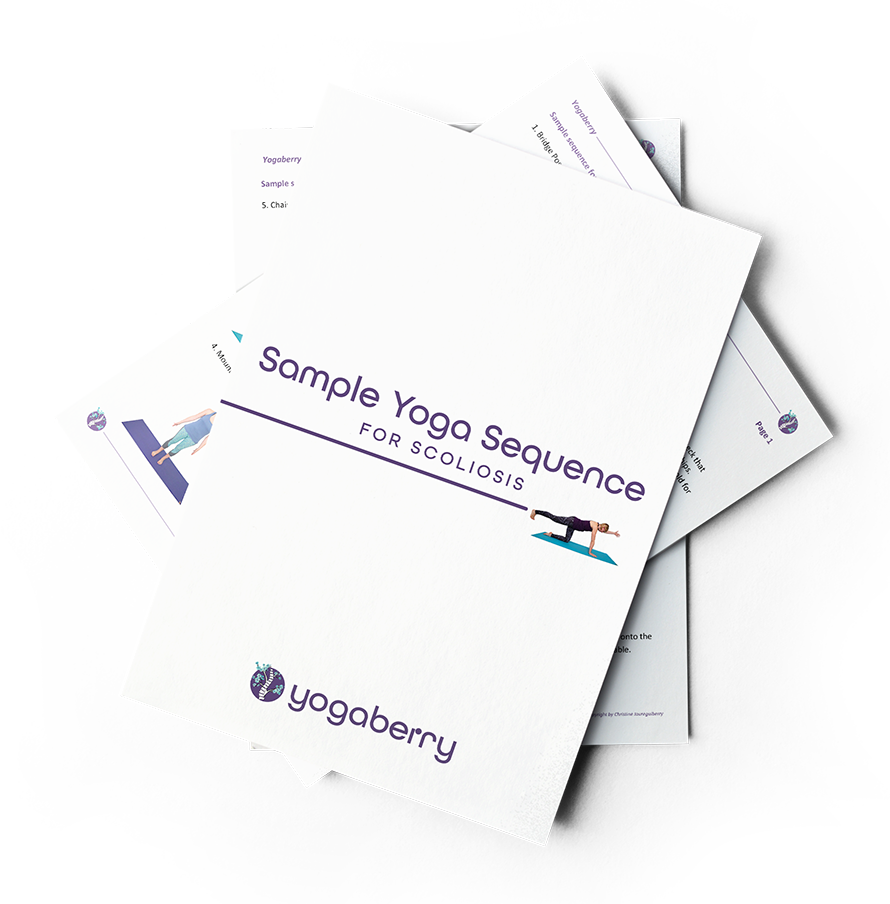Scoliosis and sciatica are two conditions that can sometimes go hand in hand, yet they are not always directly connected. If you have scoliosis and experience sciatic pain, understanding the relationship between the two can help you manage discomfort and improve your overall spinal health.
What is Sciatica?
Sciatica refers to pain that radiates along the sciatic nerve, which runs from the lower back, through the hips and buttocks, and down each leg. It’s often caused by compression or irritation of the sciatic nerve, leading to sharp, shooting pain, tingling, or numbness that typically affects only one side of the body.
Common Causes of Sciatica:
- Herniated discs – When the soft inner material of a spinal disc pushes out and presses on a nerve.
- Spinal stenosis – A narrowing of the spinal canal that puts pressure on nerves.
- Spondylolisthesis – A condition where one vertebra slips over another, causing nerve compression.
- Piriformis syndrome – Tightness or spasms in the piriformis muscle (deep in the buttock) that can compress the sciatic nerve.
What is link between Sciatica and Scoliosis?
Scoliosis is an abnormal curvature of the spine that can sometimes lead to muscular imbalances and uneven pressure on the lower spine and pelvis. While not everyone with scoliosis will develop sciatica, those with curves in the lumbar (lower back) region or a rotated pelvis may be at a higher risk.
As scoliosis progresses, especially in adulthood, it can contribute to degenerative changes in the spine, such as disc herniation or spinal stenosis, which in turn can lead to sciatic pain. The force of gravity also plays a role—over time, scoliosis can lead to increased compression in certain areas, potentially pinching the sciatic nerve.
Recognizing Sciatica Symptoms
Sciatica is typically one-sided and follows the path of the sciatic nerve. Symptoms may include:
- A sharp, burning, or shooting pain from the lower back down the leg
- Numbness or tingling in the buttock, thigh, or calf
- Weakness in the affected leg
- Pain that worsens when sitting for long periods or with certain movements
If you experience pain on both sides or weakness in both legs, seek medical advice, as this could indicate a different issue.
How to Manage Sciatica When You Have Scoliosis
If you’re dealing with both scoliosis and sciatic pain, there are steps you can take to relieve discomfort and prevent further irritation:
1. Avoid Movements That Aggravate Sciatica
- Deep forward bends & spinal flexion: These can increase disc pressure and worsen pain.
- Extreme spinal twists: If your lower back is already rotated due to scoliosis, excessive twisting can compress the nerve further.
- Prolonged sitting with poor posture: Slouching can increase lumbar compression, irritating the nerve.
2. Focus on Spinal Elongation
Since scoliosis can contribute to spinal compression, working on spinal elongation is key. Exercises that gently lengthen the spine can create more space between vertebrae, reducing nerve irritation.
Try:
- Seated or standing spinal elongation – Imagine a string pulling the top of your head upward.
- Pelvic tilts – These help maintain mobility in the lower spine.
- Gentle decompression exercises – Using a stability ball or supportive stretching techniques can help open up space in the lumbar spine.
3. Strengthen the Core and Glutes
A strong core and hip stabilizers help reduce spinal instability and support the lower back.
Beneficial exercises include:
- Pilates-based core strengthening – Movements like leg lifts, pelvic tilts, and gentle bridging can help.
- Glute strengthening – Exercises like clamshells, side-lying leg lifts, and bridges (if done correctly) can stabilize the pelvis.
- Piriformis stretches – A reclining figure-four stretch (lying on your back with one ankle over the opposite knee) can help release tension.
4. Incorporate Nerve Glides (Neural Flossing)
Nerve glides involve gentle, controlled movements that help release tension in the sciatic nerve without over-stretching it. A simple technique involves:
- Sitting tall with one leg extended.
- Flexing and pointing the toes while gently nodding the head.
- Moving slowly to avoid aggravating the nerve.
5. Modify Your Daily Habits
- Use lumbar support – A rolled-up towel or cushion in the lower back while sitting can maintain spinal alignment.
- Take breaks – Avoid sitting for extended periods. Stand up, stretch, and walk every 30-45 minutes.
- Sleep with proper alignment – A pillow between the knees (if side-sleeping) can help keep the spine neutral.
Final Thoughts
If you have scoliosis and struggle with sciatica, it’s essential to approach movement with awareness and adaptability. While strengthening and elongation exercises can be incredibly beneficial, avoid extreme movements that may worsen pain.
If symptoms persist or worsen, consult a healthcare professional, such as a physical therapist or spinal specialist, to determine the best course of action.
Want to dive deeper? Be sure to check out this video for a chair-friendly routine designed to relieve sciatic pain!
About Christine Jaureguiberry
Christine Jaureguiberry is the creator of Yogaberry, an online Yoga for Scoliosis community, and the host of the popular podcast Back Chat, a resource for all things back care and scoliosis.
Living with scoliosis herself, she brings her extensive training and years of experience to empowering classes, workshops and training for students from all over the world.
Christine is passionate about helping people who suffer from back ache, scoliosis and spinal fusion and has supported hundreds of people to learn how to use yogic postures and techniques to feel in control, empowered and live a pain free life.




